Join More Than 50,000+ Subscribers and get latest camera news and rumors
NEW CAMERA VIDEOS ON YOUTUBE
|
By admin, on June 20th, 2022
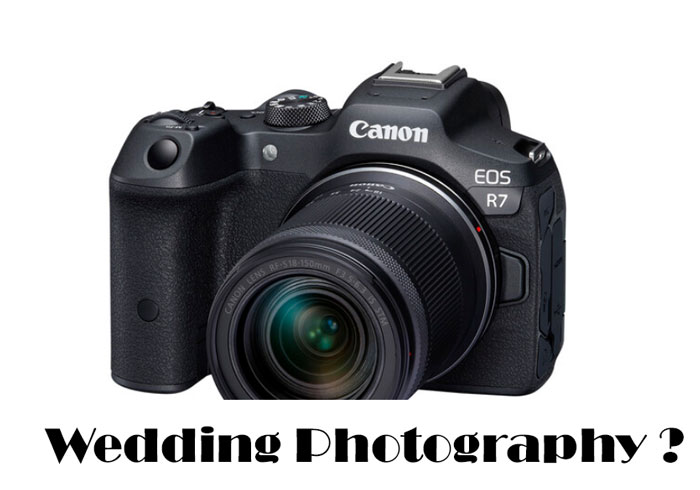 Canon R7 is weather sealed camera with dual card slots, an updated 32-megapixel CMOS sensor, and enhanced video core specification the overall core spec looks very promising. In the video mode, we have a log profile open for cinematographers and the option to record a 10-bit internal video. Canon has given whatever the best core specs possible, at this price point Canon R7 is weather sealed camera with dual card slots, an updated 32-megapixel CMOS sensor, and enhanced video core specification the overall core spec looks very promising. In the video mode, we have a log profile open for cinematographers and the option to record a 10-bit internal video. Canon has given whatever the best core specs possible, at this price point
Should you buy Canon R7 for Wedding Photography?
Everything looks so attractive when you see the core specs of the camera, but its coming at a higher price range. So, instead of getting Canon R7 camera kindly look at the alternatives, we have to help you.
1. The only thing that resists me from recommending Canon R7 camera to you is its price range
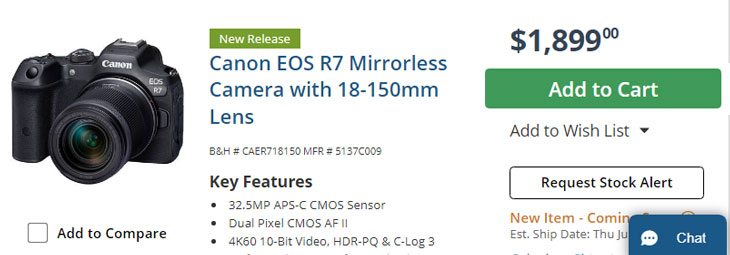 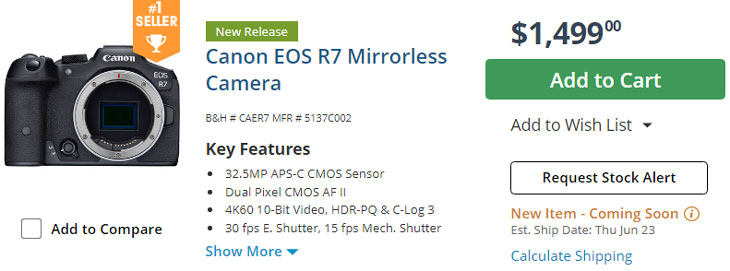
You are paying for features that you would never utilize as a wedding photographer. For example, 15 FPS or 30 FPS continuous shooting speed with animal eye or Bird eye AF will get never utilized.
2. If You are an Only a Photographer then we do have a better Canon Combo for you
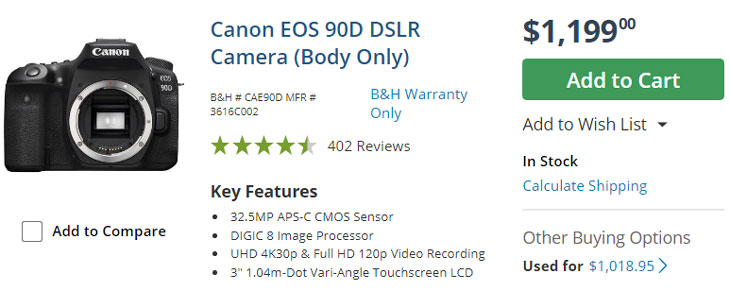
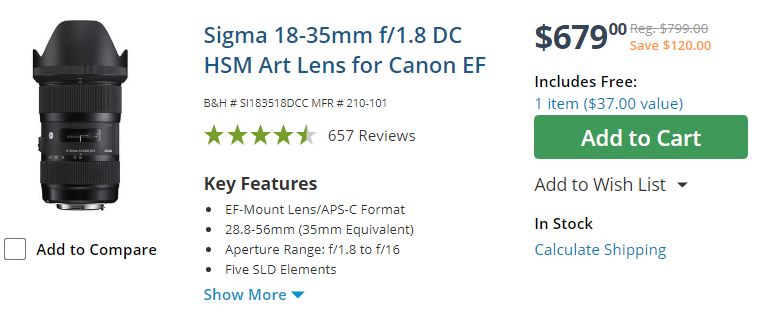 3. We Know DSLRs are in Cannabilization mode 3. We Know DSLRs are in Cannabilization mode
So, what that means is we should stop using our brains too, the only thing I would request to anyone who is reading this article is to make the decision consciously.
4. As a photographer what matters to me is the image quality
OR you can say the overall output, with 90D and 18-35mm Lens you will have the best APS-C combo in your hand.
5. The Canon Fullframe Advantage approx the Same price range
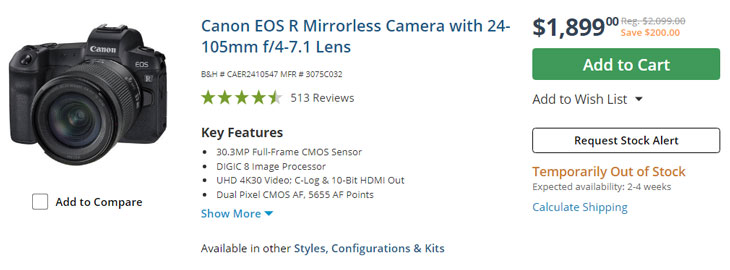 6. Other Fullframe options 6. Other Fullframe options


Nikon Z6 Mark II, Sony A7C, and Sony A7 III cameras are available when you are able to slightly increase your budget
I know that in that price range Canon doesn’t have any NEW full-frame camera
So take a decision concisely based on your requirements and budget and pick the best camera you want to have for wedding photography.
Get LIVE RUMORS –> FACEBOOK | TWITTER | INSTAGRAM to get live news + Canon rumors 24X7
Need help in selecting your best camera ? Telegram Group – https://t.me/+-lknCoLNMEdhZTZl
By admin, on June 17th, 2022
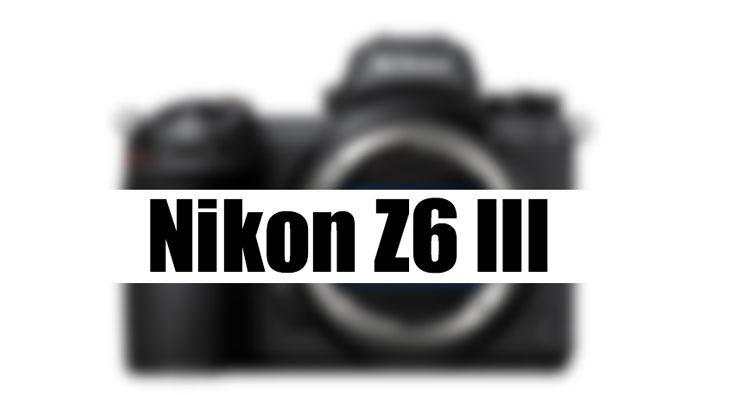
As we know the Canon EOS R camera uses a 30MP Fullframe sensor and the Sony A7 IV was recently announced with a 33MP sensor. Similarly, If Nikon follows the same trend as Canon and Sony, we are sure they will do. The next Nikon update to Z6 may Bring a 30MP Fullframe Sensor inside.
Keep in mind the below specs, is a wish-list of TNC list not coming out from any source
Nikon Z6 Mark III Expected core specification
30-33MP FX-Format CMOS Sensor
EXPEED 7 Image Processor
5-Axis In-Body Vibration Reduction
UHD 4K60 uncropped Video; N-Log & 10-Bit internal
HDR (HLG), ProRes RAW
New AI-Based Subject Detection from Nikon Z9
Real-time Tracking and Real-time Eye AF
Dual Memory Card Slots
Announcement Aug-Oct 2022
Body price under $2500
Why a 30MP Sensor inside the Nikon Z6 Mark III Camera?
Both EOS R and Sony A7 4 camera, feature a 30 and 33 MP sensor respectively
We know that the Canon EOS R update is arriving, with a 30 MP sensor inside it. And the other competitor A74 already has inside it, Now Nikon has no other way left and they have to introduce the sensor of a 30 MP resolution inside the upcoming Nikon Z6 Mark 3 camera
Getting a 30MP Sensor from Sony isn’t easy, Since Sony already has an A74 with a 33MP Sensor on the market. Let’s see What Nikon will do now? Let’s hope for the best
Why Expeed 7 inside the Nikon Z6 Mark III Camera?
Nikon will use its Expeed 7 image processor inside the Nikon Z6 Mark 3 camera. As you can see nowadays even Canon Mid-Range APS-C Mirrorless cameras are using Digic X image processors, and the camera market is now becoming more competitive
With the introduction of a new image processor, the camera makers also introduce new image recording algorithms as well as new AI AF algorithms. If Nikon wants to follow up on the market competition they have to use Nikon Z9 Expeed 7 Image processor.
Nikon Z6 Mark III AutoFocus System ?
Nikon will introduce the Z9 AI AF system to the Nikon Z6 Mark III Camera. To improve the overall AF performance of the Nikon Z6 Series cameras.
Type of AF modes expected to arrive inside the Z6 Mark III – 9 types of simultaneous subject detection in both stills and videos. We will experience a big technological upgrade in the AF performance of the camera compared to the existing Z6 Mark II.
Before we put our expectations for the desired continuous shooting speed. We have to see what the competitors are offering right now
Canon R6 offers 14fps of Mech shutter speed and 20fps of elec. Shutter. Sony A7 IV Limite to 10FPS only. We are not expecting a faster burst speed in the Z6 Mark III camera, since this time we do also have a higher resolution to process.
Nikon Z6 Mark III Video Specs?
10-bit internal video recording, they have to introduce it, Nikon has no other way left. 4K 60p Oversampled file, 10 Bit internal Recording, and a Vari-angle display screen. Recording modes include NLog, NLog2, AppleProRes, HLG(HDR), and of course, H.265 carrier also included for 10 Bit MP4 files.
If you consider all the videography features that we are expecting here, then for sure we will have a major upgrade compared to the existing Nikon Z6 mark to camera
Follow us on our social pages FACEBOOK | TWITTER | INSTAGRAM to get live news + Nikon Rumors 24 X7
By admin, on June 7th, 2022
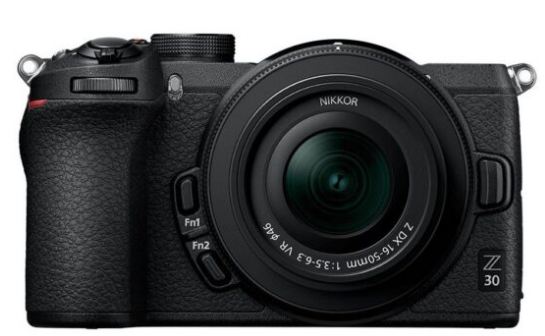
According to the latest rumors surfaced over the web Nikon Z30 Coming soon, the camera is expected to arrive in June 2022. The camera will arrive with the rumored Nikkkor Z 40mm F4.5 Lens. As per Nikon Rumor information Z30 is to be called the successor of Z50 and will feature advanced core specs.
Nikon Mirrorless camera is also expected to arrive with 8K Video capability, and 36-46 MP Sensor Resolution. More details will come soon.
—– End of Rumor ——
TNC Take – As per rumors, we will have an APS-C Mirrorless camera announcement from Nikon. But, at the same time, we are not so sure about the specs of a camera. It’s a high APS-C DX-Format Mirrorless camera OR a Nikon Z30, we need more confirmation over that.
We will publish more information soon.
Follow us on our social pages FACEBOOK | TWITTER | INSTAGRAM to get live news + Nikon Rumors 24 X7
source NR
By admin, on May 31st, 2022
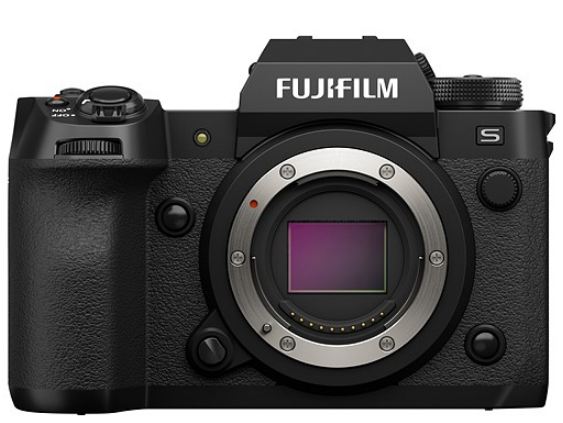
Fuji announced a new camera today, the camera features a 26 MP stacked CMOS sensor. AF / AE tracking improved vastly due to the 2X faster image processor included inside. The camera has the ability to shoot 40 frames per second with full-time AI AF support. The 40fps and a buffer that allows up to 184 JPEG or 175 Raw files at this fastest rate, and over 1000 JPEGs or 400 Raw images at 15fps using its mechanical shutter.
Fuji X-H2S from B&H Store | Amazon.com
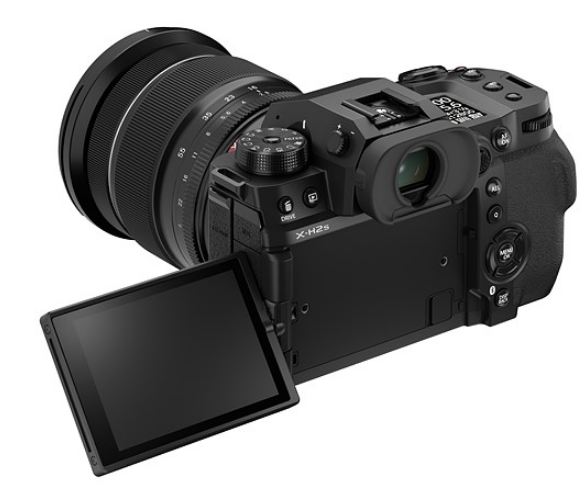
The camera has the ability to Capture 6K video with the help of a new 26Mp Sensor and a new 2X image processor. The X-H2S can capture DCI or UHD 4Kat up to 60p using the entire width of its sensor to give footage sampled from 6.2K width. It can also shoot 3:2 6.2K footage using its entire sensor area or 4K at up to 120p from a 1.29x cropped area. Footage can be recorded in a choice of 8-bit H.264, 10-bit H.625 or ProRes 422HQ, 422 or 422 LT with the option of ProRes Proxy capture in parallel. 4K at up to 120p can be output over HDMI or a Raw stream for encoding as ProRes RAW or BRaw using external recorders. Means a perfect Cinema camera for Fuji Lovers.
An 18-120mm F4 power zoom lens has been launched alongside the camera, as has a 150-600mm F5.6-8.0 super-tele zoom.The Fujifilm X-H2S will be available from early July at a recommended price of $2499.
Fuji X-H2S Press Release
Fujifilm Introduces X-H2S Mirrorless Digital Camera
New flagship camera features enhanced still and video capabilities
Valhalla, N.Y., May 31, 2022 – FUJIFILM North America Corporation today announced the launch of its next flagship X Series mirrorless digital camera, FUJIFILM X-H2S (X- H2S). The most advanced X Series mirrorless camera yet, X-H2S includes advanced features for both still photography and video. It is also the first APS-C digital camera of its kind to feature Fujifilm’s 26.16MP X-TransTM CMOS 5 HS imaging sensor, a stacked, back-side illuminated imaging sensor with a signal reading speed up to four times faster than Fujifilm’s previous X-TransTM CMOS 4*1.
X-TransTM CMOS 5, combined with the newly minted X-Processor 5 (which doubles the camera’s processing power compared to X-Processor 4), greatly enhances overall image fidelity at lower ISOs and reduces noise at higher ISOs. Subject-detection AF, which maximizes the tracking speed and accuracy of moving subjects is now made possible through the incorporation of an AI processor.
For video, X-Processor 5 enables the recording of 10-bit 4:2:2 video in resolutions up to 6.2K/30P and frame rates as fast as 4K/120P and FHD/240p. Support for professional codecs, like Apple ProRes HQ/ Pro Res 422/ Pro Res LT, provide incredible flexibility within post-production workflows, while also minimizing power consumption, thereby extending the camera’s maximum video recording time up to 240 minutes.
“The universal reaction to X-H2S has been, ‘This is exactly what I’ve been waiting for!’ The overwhelmingly enthusiastic response reinforces my belief that X-H2S will be the versatile, hybrid digital camera that can meet the diverse needs of photographers and motion production professionals,” said Victor Ha, vice president, Electronic Imaging and Optical Devices Divisions, FUJIFILM North America Corporation. “It’s fun to see so much enthusiasm for this camera, especially since the features it has aren’t normally found at a price point of only $2499.95.”
With these sensor and processor updates, X-H2S achieves substantial performance improvement over other digital camera models on the market, including:
- Major boost to burst mode capability: X-H2S can apply AF / AE tracking in blackout-free continuous shooting conditions of up to 40 frames per second*2, and can create over 1,000 frames continuously with the high-speed burst shooting mode set to 30 frames per second (JPEG) or 20 frames per second (RAW)*3
- Dramatically evolved autofocus (AF) performance: X-H2S’s high number of AF calculations performed per second improves overall AF accuracy and facilitates subject-detection AF. Developed with Deep Learning technology, subject-detection AF implements an advanced prediction algorithm to enhance the performance of Zone AF, by refining the camera’s ability to track moving subjects in low-contrast environments. Subject detection and tracking has also been expanded from the human face and eyes to now include animals, birds, cars, motorcycles, bicycles, airplanes and trains. X-H2S keeps targeted subjects consistently in focus, allowing users to concentrate on framing and critical image-making opportunities.
- Exceptional video performance: X-H2S digital camera supports internal recording of 4:2:2, 10-bit Apple ProRes HQ/ ProRes 422/ ProRes LT and ProRes 422 Proxy at resolutions of up to 6.2K/30P and 4:2:2, 10-bit h.265video in frame rates as fast as 4K/120P and FHD/ 240p. The sensor’s readout speed of 1/180 seconds when recording video further assists in minimizing rolling shutter effects on moving subjects, or when the camera itself is moving. A heat-dissipating design brings the 4K/60P continuous video recording time to approximately 240 minutes, while the optional FAN-001 cooling fan accessory assists with maintaining similar levels of performance in high-temperature conditions.
- Significant flexibility for external recording: X-H2S is the first X Series digital camera to contain F-Log2, which provides a dynamic range of up to 14+ stops, allowing for more creative possibilities both in production and post-productionworkflows.
Additional Product Features:
Best subject tracking in X Series history
- X-H2S controls phase-detection pixels independently from image display when in burst mode. This triples the number of calculations in phase detection from the acclaimed FUJIFILM X-T4 and enables high-speed focusing even during high-speed continuous shooting.
- X-H2S’s electronic viewfinder uses a high-resolution, 5.76-million-dot panel with a magnification of 0.8x. With a frame rate of approximately 120fps, the smooth viewfinder offers stellar visibility as a result of strong suppression of parallax and distortion (which commonly occurs when an eye position becomes displaced while using the viewfinder), thereby enabling accurate subject tracking.
Thoughtful design to enhance users’ content creation experience
- The camera features an all-new five-axis, in-body image stabilization mechanism, which offers up to 7.0-stops of image stabilization*4. Users can comfortably choose to operate the camera handheld in active environments (e.g., sports) or in low-light conditions (e.g., nightscape).
- X-H2S incorporates the popular design features of Fujifilm’s previous X-H1 model, such as a large grip that works well with large lenses, an LCD display on the top panel for users to check settings at any time, and a highly-robust body that withstands heavy professional use. Many additional improvements have also been included in the design and construction of X-H2S:
- The shutter button’s overall feel has been adjusted to improve its operability when it is half-pressed. This allows users to release the shutter exactly when intended.
- A standalone video recording button has been added to make the experience of recording video with the 1.62-million-dot, vari-angle LCD monitor a seamless experience.
- From the fit and finish of the buttons and materials used in the construction of X-H2S to being able to map specific functions to the AF ON button, image-makers will find the experience of using X-H2S intuitive and familiar. Shutter durability has been optimized, withstanding 500,000 actuations during quality and performance testing.
- The camera features dual memory card slots supporting one CFexpressTM Type B and one SD card*5. Users can draw out the full potential of X-H2S’s fast, continuous image-making and video performance with the high-speed data processing performance of CFexpressTM Type B memory cards.
X-H2S Accessories
Several new accessories are also being introduced to complement the launch of X- H2S. These optional accessories include:
Vertical battery grip (VG-XH)
- Dust- and moisture–resistant and is designed to operate at temperatures as low as 14 degrees Fahrenheit (-10 degrees Celsius). It fits two FUJIFILM NP-W235 high-capacity batteries.
- The grip’s button layout is designed to provide equal operability whether holding the camera vertically or horizontally.
File transmitter (FT-XH)
- Features wired LAN connectivity and high-speed wireless communications capability, essential for in-studio tethered content creation or for creating sports/media content. It can also be used as a vertical grip using two FUJIFILM NP-W325 high-capacity batteries.
- It can be combined with X-H2S to support the following communication specifications:
- FTP transfer by wired LAN / wireless LAN / USB Smartphone tethering
- Tethered shooting by wired LAN / wireless LAN
- Remote recording function by wired LAN / wireless LAN; capable of controlling up to four X-H2S cameras from a browser at the same time
Cooling fan (FAN-001)
- Specifically designed for the X-H2S to facilitate extended image creation and video recording in high temperatures.
- The fan can be fitted to the rear of the camera body without a cable, supplying power, extending continuous video recording time at high temperature, and eliminating concerns of heat-related camera shutdown.
Cover kit (CVR-XH)
- Protects various terminals on the camera. Items contained in this kit:
- 1x Sync terminal cover
- 1x Hot shoe cover
- 1x File transmitter / vertical battery grip terminal cover
- 1x Cooling fan terminal cover
- 1x Memory card slot cover
Pricing and Availability:
FUJIFILM X-2HS mirrorless digital camera is expected to be available in early July 2022 at the Manufacturer’s Suggested Retail Price of $2,499 USD and $3,200 CAD.
Pricing and expected availability for X-2HS accessories are as follows:
VG-XH Vertical Battery Grip: Available early July 2022 at a Manufacturer’s Suggested Retail Price of $399 USD and $515 CAD.
FT-XH File Transmitter: Available in September 2022 at a Manufacturer’s Suggested Retail Price of $999 USD and $1,280 CAD.
FAN-001 Cooling Fan: Available early July 2022 at a Manufacturer’s Suggested Retail Price of $199 USD and $260 CAD.
CVR-XH Cover Kit: Available early July 2022 at a Manufacturer’s Suggested Retail Price of $19.99 USD and $26 CAD.
By admin, on May 31st, 2022
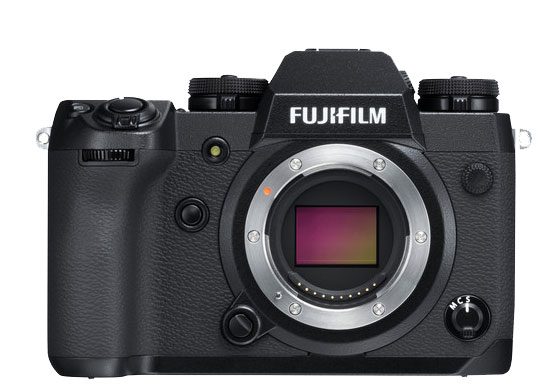
Finally, we have the full specifications of the Fuji X-H2S camera.
Fuji X-H2S Price $2499
Full Specs
- Number Of Effective Pixels 26.16 millions pixels
- Image Sensor: 23.5mm x 15.6mm (APS-C) X-Trans CMOS 5 HS with primary color filter
- Sensor Cleaning System Ultra Sonic Vibration
- Storage Media: SD Card (-2GB) / SDHC Card (-32GB) / SDXC Card (-2TB) / UHS-I / UHS-II / Video Speed Class V90 / CFexpress Type B Card (-2TB)
- File Format (Still): JPEG-Exif Ver.2.32, HEIF-4:2:2 10bit, RAW-14bit RAW (RAF original format), TIFF-8bit / 16bit RGB (In-camera Raw Conversion Only)
- Number Of Recorded Pixels: L: [3:2] 6240×4160 [16:9] 6240×3512 [1:1] 4160×4160 M: [3:2] 4416×2944 [16:9] 4416×2488 [1:1] 2944×2944 S: [3:2] 3120×2080 [16:9] 3120×1760 [1:1] 2080×2080
- Lens Mount: FUJIFILM X mount
- Sensitivity Standard Output: STILL: AUTO1/ AUTO2/ AUTO3/ ISO160-12800 (1/3 step) MOVIE: AUTO/ ISO160-12800 (1/3 step)
- Sensitivity Extended Output: STILL: ISO80/I SO100/ ISO12/ ISO25600/ ISO51200 MOVIE: ISO25600
- Exposure Control: TTL 256-zone metering/ Multi/ Spot/Average/ Center Weighted
- Exposure Mode: P (Program AE)/ A (Aperture Priority AE)/ S (Shutter Speed Priority AE)/ M (Manual Exposure)
- Exposure Compensation: STILL: -5.0EV-+5.0EV (1/3EV step)/ MOVIE: -2.0EV-+2.0EV (1/3EV step)
- Image Stabilizer Mechanism: Image sensor shift mechanism with 5-axis compensation
- Image Stabilizer Compensation Effect: Up to 7.0 stops (based on CIPA standard). Pitch/yaw shake only, with XF35mmF1.4 R lens attached.
- Digital Image Stabilization Yes, movie mode only: Image Stabilizer Is Mode Boost Yes, movie mode only
- Shutter Type: Focal Plane Shutter
- Mechanical Shutter Speed: P mode: 4sec to 1/8000
- A mode: 30sec to 1/8000 S/M mode: 15min to 1/8000 Bulb mode: up to 60min
- Electronic Shutter Speed
P mode: 4sec to 1/32000
A mode: 30sec to 1/32000 S/M mode: 15min to 1/32000 Bulb mode: 1sec Fixed
- Electronic Front Curtain Shutter Speed P mode: 4sec to 1/8000
A mode: 30sec to 1/8000
S/M mode: 15min to 1/8000 Bulb mode: up to 60min
- Mechanical + Electronic Shutter Speed P mode: 4sec to 1/32000
A mode: 30sec to 1/32000
S/M mode: 15min to 1/32000 Bulb mode: up to 60min
- E-Front + Mechanical Shutter Speed P mode: 4sec to 1/32000
A mode: 30sec to 1/32000 S/M mode: 15min to 1/32000 Bulb mode: up to 60min
- E-Front+Mech+Electronic Shutter Speed P mode: 4sec to 1/32000
A mode: 30sec to 1/32000
S/M mode: 15min to 1/32000
- Bulb mode: up to 60min Shutter Speed Movie
- 6.2K: 1/8000 to 1/24
DCI 4K/4K: 1/8000 to 1/4 sec. FHD: 1/8000 to 1/4 sec.
- Synchronized Shutter Speed For Flash Mechanical Shutter: 1/250sec. or slower Electronic Shutter: 1/125sec. or slower
- Continuous Shooting
Electronic Shutter Approx. 40fps (JPEG: 184 frames, Compressed RAW: 175 frames, Lossless Compressed RAW 170 frames, Uncompressed RAW: 140 frames)
Electronic Shutter Approx. 30fps (JPEG: 1000+ frames, Compressed RAW: 270 frames, Lossless Compressed RAW 250 frames, Uncompressed RAW: 180 frames)
Electronic Shutter Approx. 20fps (JPEG: 1000+ frames, Compressed RAW: 1000+ frames, Lossless Compressed RAW 1000+frames, Uncompressed RAW: 800 frames)
Electronic Shutter Approx. 15fps (JPEG: 1000+ frames, Compressed RAW: 1000+ frames, Lossless Compressed RAW 1000+frames, Uncompressed RAW: 1000 frames)
Mechanical Shutter Approx. 15fps (JPEG: 1000+ frames, Compressed RAW: 1000+ frames, Lossless Compressed RAW 1000+frames, Uncompressed RAW: 1000 frames)
Mechanical Shutter Approx. 10fps (JPEG: 1000+ frames, Compressed RAW: 1000+ frames, Lossless Compressed RAW 1000+frames, Uncompressed RAW: 1000+frames)
Mechanical Shutter Approx. 8.0fps (JPEG: 1000+ frames, Compressed RAW: 1000+ frames, Lossless Compressed RAW 1000+frames, Uncompressed RAW: 1000+frames)
Electronic Shutter Approx. 40fps (While half press 40 frames, After full press 110 frames, Total 150 frames)
Electronic Shutter Approx. 30fps (While half press 30 frames, After full press 1000+ frames)
Electronic Shutter Approx. 20fps (While half press 20 frames, After full press 1000+ frames)
Electronic Shutter Approx. 15fps (While half press 15 frames, After full press 1000+ frames)
- AE Bracketing
AE Bracketing (Frames: 2, 3, 5, 7, 9 Step: by 1/3EV step, up to +/-3EV steps)
Film simulation bracketing (Any 3 types of film simulation selectable) Dynamic Range Bracketing (100%, 200%, 400%)
ISO sensitivity Bracketing ( +/-1/3EV, +/-2/3EV, +/-1EV)
White Balance Bracketing ( +/-1, +/-2, +/-3)
Focus Bracketing (AUTO, MANUAL)
Multiple Exposure Yes (Max. 9 frames)Additive, Average, Bright, Dark HDR Mode (AUTO, 200%, 400%, 800%, 800%+)
Advanced filter Toy camera, Miniature, Pop color, High-key, Low-key, Dynamic tone, Soft focus, Partial color (Red / Orange / Yellow / Green / Blue / Purple
- Focus Mode
Single AF/ Continuous AF/ MF
Focus Type
Intelligent Hybrid AF (TTL contrast AF / TTL phase detection AF)
Focus Low-Light Performance Contrast: -4.0EV
Phase Detection: -7.0EV AF Frame Selection
Single point AF: 13 x9/ 25 x17 (Changeable size of AF frame) Zone AF: 3 x3/ 5 x5/ 7 x7 from 117 areas on 13 x9 grid Wide/Tracking AF AF-S: Wide/ AF-C: Tracking, All
- White Balance
Auto (WHITE PRIORITY, AUTO, AMBIENCE PRIORITY)/ Custom1 – 3/ Color temperature selection (2500K-10000K)/ Preset Daylight, Shade, Fluorescent Light-1, Fluorescent Light-2, Fluorescent Light-3, Incandescent Light, Underwater
- Self-Timer 10sec./2sec.
- Interval Timer Shooting
Yes (Setting : Interval, Number of shots, Starting time, Interval timer shooting exposure smoothing)
- Flash
EF-X8 Guide Number approx. 11 (ISO200m) / approx. 8 (ISO100m)
- Flash Sync Mode
EF-X8: 1st Curtain/ 2nd Curtain
Shoe Mount Flash: 1st Curtain/ 2nd Curtain AUTO FP (HSS) Synchronized terminal: 1st Curtain/ 2nd Curtain.
- Flash Mode
TTL (TTL AUTO / STANDARD / SLOW SYNC. ) / MANUAL / COMMANDER / OFF Shoe Mount Flash TTL (TTL AUTO) / STANDARD / SLOW SYNC. ) / MANUAL / MULTI
- Hot Shoe
Yes (Dedicated TTL Flash compatible)
- Viewfinder EVF
0.5″ approx. 5.76 million dots OLED Color Viewfinder
Coverage of viewing area vs. capturing area: approx. 100%
Eyepoint: approx. 24mm (from the Rear End of the camera’s Eyepiece) Diopter adjustment: -5-+3m-1
Magnification: 0.80 x with 50mm lens (35mm equivalent) at infinity and Diopter set to -1.0m-1
Diagonal angle of view: approx. 40 Degree (Horizontal angle of view: approx. 32 Degree ) Built-in eye sensor
- LCD Monitor
3.0″ vari-angle Touch Screen Color LCD Monitor Aspect Ratio 3:2
Resolution: Approx. 1.62 million dots
- Touch Screen Shooting Mode
Shooting, AF, Focus Area, OFF, Double Tap Setting (ON/OFF), Touch Function Setting (ON/OFF), EVF Touch Screen Area Setting
- Touch Screen Playback Mode
Swipe, Pinch-in / Pinch-out, Double-tap, Drag
- Sub LCD Monitor
1.28″ Monochrome LCD Monitor, Aspect Ratio 1:1, Dots 128×128-dot
- File Format (Movie)
MOV/ Apple ProRes (422, HQ, LT)
Audio: Linear PCM/ Stereo Sound (24bit / 48KHz sampling) HEVC/ H.265
Audio: Linear PCM / Stereo sound (24bit / 48KHz sampling) MPEG-4, AVC/ H.264
Audio: Linear PCM / Stereo sound (24bit / 48KHz sampling) MP4, MPEG-4, AVC/ H.264
Audio: AAC
- Movie Compression
All Intra/Long-GOP
- File Size/Frame Rate/Recording Time
6.2K [3:2] – 6240 x4160
29.97p/ 25p/ 24p/ 23.98p
720Mbps/ 360Mbps/ 200Mbps/ 100Mbps/ 50Mbps DCI 4K [17:9] – 4096 x2160
59.94p/ 50p/ 29.97p/ 25p/ 24p/ 23.98p
720Mbps/ 360Mbps/ 200Mbps/100Mbps/50Mbps
4K [16:9] – 3840 x2160
59.94p/ 50p/ 29.97p/ 25p/ 24p/ 23.98p
720Mbps/ 360Mbps/ 200Mbps/ 100Mbps/ 50Mbps
Full HD [17:9] – 2048 x1080
59.94p/ 50p/ 29.97p/ 25p/ 24p/ 23.98p
720Mbps/ 360Mbps/ 200Mbps/ 100Mbps/ 50Mbps
Full HD [16:9] – 1920 x1080
59.94p/ 50p/ 29.97p/ 25p/ 24p/ 23.98p
720Mbps/ 360Mbps/ 200Mbps/ 100Mbps/ 50Mbps
DCI4K High speed rec. [17:9] – 4096×2160
120p/100p
720Mbps(recording)/ 360Mbps(recording)/ 200Mbps(recording)
4K High speed rec. [16:9] – 3840×2160
120p/100p
720Mbps(recording)/ 360Mbps(recording)/ 200Mbps(recording) Full HD High speed rec. [17:9] – 2048×1080
240p/200p/ 120p/ 100p
720Mbps(recording)/ 360Mbps(recording)/ 200Mbps(recording) Full HD High speed rec. [16:9] – 1920×1080
240p/200p/ 120p/ 100p/
720Mbps(recording)/ 360Mbps(recording)/ 200Mbps(recording)
- Film Simulation Mode
19 modes (PROVIA/Standard, Velvia/Vivid, ASTIA/Soft, Classic Chrome, PRO Neg.Hi, PRO Neg.Std, Classic Neg., Nostalgic Neg., ETERNA Cinema, ETERNA BLEACH BYPASS, ACROS, ACROS + Ye Filter, ACROS + R Filter ACROS + G Filter, Black & White, Black & White + Ye Filter, Black & White + R Filter, Black & White + G Filter, Sepia)
- Clarity Setting +/-5 steps
- Monochromatic Color Yes
- Grain Effect
Roughness STRONG, WEAK, OFF, Size LARGE, SMALL
- Color Chrome Effect STRONG, WEAK, OFF
- Color Chrome Blue STRONG, WEAK, OFF
- Dynamic Range Setting
AUTO, 100%, 200%, 400%
- ISO restriction (DR100%: No limit, DR200%: ISO320 or more, DR400%: ISO640 or more)
- Dynamic Range Setting (Movie) 100%, 200%, 400%
- ISO restriction (DR100%: No limit, DR200%: ISO320 or more, DR400%:
- ISO640 or more) Wireless Transmitter Standard
IEEE802.11a/b/g/n/ac (standard wireless protocol) Wireless Transmitter Encryption
WEP/WPA/WPA2 mixed mode Wireless Transmitter Access Mode
- Infrastructure Bluetooth Standard
Bluetooth Ver. 4.2 (Bluetooth low energy)
Bluetooth Operating Frequency 2402 – 2480MHz
- Terminal – Digital Interface
USB Type-C (USB3.2 Gen2x1)
- Terminal – Hdmi Output
HDMI connector (Type A)
- Terminal – Others
3.5mm, stereo mini connector (Microphone), 3.5mm, stereo mini connector (Headphone), 2.5mm, Remote Release Connector, Hot shoe, Synchronized terminal
- Power Supply
NP-W235 Li-ion battery (included)
- Battery Life For Still Images
Economy Mode Approx. 720 frames, Normal Mode Approx. 580 frames
- Actual Battery Life For Movie Capture
6.2K Approx. 90min. (29.97p),4K Approx. 70min. (59.94p), Approx. 60min (120p),Full HD Approx. 95min. (59.94p)
- Continuance Battery Life
6.2K Approx. 120min. (29.97p),4K Approx. 105min. (59.94p),Full HD Approx. 165min. (59.94p)
- Operating Temperature
-10 Degree C-40 Degree C
- Operating Humidity
10% – 80% (no condensation)
- Starting Up Period Approx. 0.49sec.
- Battery Info
Required, included
Battery Material Lithium ion
Battery Type NP-W235
Battery Quantity 1
- Dimensions (W x H x D)
External: 136.3 x 92.9 x 84.6-42.8mm
- Weight
Including Battery and Memory Card: Approx. 660g Excluding Battery and Memory Card: Approx. 579g
Follow us on our social pages FACEBOOK | TWITTER | INSTAGRAM, –> See More Fuji Rumors Or subscribe us via Email
source digicameinfo
By admin, on May 28th, 2022
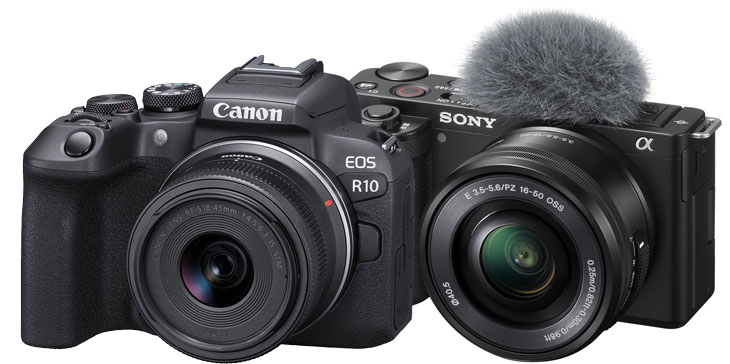
Canon R10 is a recently announced Hybrid camera. And Sony ZV–E10 is a dedicated V-logging interchangeable Lance camera. So which one of these is more suitable for photography and which one is more recommended for videography and cinematography?
Let’s discuss some basics: The Canon R10 and the Sony’s ZV E10 camera uses conventional CMOS sensors, none of these cameras are equipped with a BSI or a stacked CMOS sensor. At the same time, the resolution of both the cameras is exactly the same.
Updated Image Sensor in Canon R10
Canon has updated the microlens structure of their 24.2 mp APS-C CMOS sensor, so we may expect a little bit more sharpness from the canon R10 camera. All though we have to wait for studio test results to confirm this feature.
Now in photography not only image quality, but The autofocusing system is also a very important or integral part of the entire process
|
Canon R10 |
Sony ZV-E10 |
| Lens Mount |
Canon RF |
Sony E |
| Sensor Resolution |
Actual: 25.5 Megapixel
Effective: 24.2 Megapixel |
Actual: 25 Megapixel
Effective: 24.2 Megapixel (6000 x 4000) |
| Sensor Type |
22.3 x 14.9 mm (APS-C) CMOS |
23.5 x 15.6 mm (APS-C) CMOS |
| Crop Factor |
1.6x |
1.5x |
| Image Stabilization |
Digital (Video Only) |
Digital (Video Only) |
| Built-In ND Filter |
None |
None |
| Capture Type |
Stills & Video |
Stills & Video |
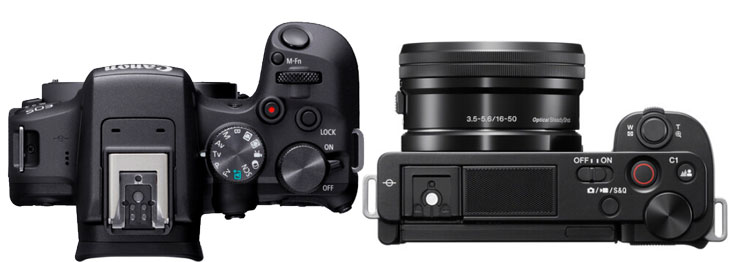
Autofocusing System
We know that both Canon and Sony make the world’s best autofocusing systems. But this time Canon has upscaled the dual pixel CMOS autofocusing system even in the mid-range camera. Now we are getting the 2nd generation of dual pixel CMOS autofocusing system in Canon R10. camera. And dedicated tracking modes to track animals, vehicles which include moving cars motorbikes, etc., as well as an artificially intelligent AF force to track any 3D moving subject.
| Focus Type |
Auto and Manual Focus |
Auto and Manual Focus |
| Focus Mode |
Continuous-Servo AF, Manual Focus, Single-Servo AF |
Automatic, Continuous-Servo AF, Direct Manual Focus, Manual Focus, Single-Servo AF |
| Autofocus Points |
Photo, Video
Phase Detection: 651 |
Phase Detection: 425
Contrast Detection: 425 |
| Autofocus Sensitivity |
-4 to +20 EV |
-3 to +20 EV |
Canon R10 features 651 Autofocusing zones in the sensor and is fabricated with 3975 AF points. Sony Hybrid AF points and limited to 451 as well as contrast-detect AF points. So, if we compare both then Canon R10 does leads in core specs of the AF system. Although we have to also consider the Sony ZV-E10 camera also features a dedicated vlogging mode which is more usable to vloggers.
Burst mode – Canon RF features an electronic and mechanical shutter, the Max shooting speed is 23 Frames per second, up to 70 Frames (JPEG) / 21 Frames (Raw). And with a mechanical shutter, you are able to capture 15fps per second at 24.2 MP for up to 460 Frames (JPEG) / 29 Frames (Raw). Sony ZV-E10’s continuous shooting speed is limited to Up to 11 fps at 24.2 MP for up to 116 Frames (JPEG) / 46 Frames (Raw).
|
Canon R10 |
Sony ZV-E10 |
| Shutter Type |
Electronic Shutter, Mechanical Focal Plane Shutter |
Mechanical Focal Plane Shutter, Electronic Shutter |
| Shutter Speed |
Mechanical Shutter
1/4000 to 30 Seconds
Electronic Shutter
1/4000 to 30 Seconds |
Mechanical Shutter
1/4000 to 30 Seconds
1/4000 to 1/4 Second in Movie Mode |
| Bulb/Time Mode |
Bulb Mode |
Bulb Mode |
| ISO Sensitivity |
Photo
100 to 32,000 in Manual, Auto Mode (Extended: 100 to 51,200) |
Photo
100 to 32,000 in Auto Mode (Extended: 50 to 51,200)
Video
100 to 3200 |
| Metering Method |
Center-Weighted Average, Evaluative, Partial, Spot |
Center-Weighted Average, Multi-Zone, Spot |
| Exposure Modes |
Aperture Priority, Manual, Program, Shutter Priority |
Aperture Priority, Auto, Manual, Program, Shutter Priority |
| Exposure Compensation |
-3 to +3 EV (1/3, 1/2 EV Steps) |
-5 to +5 EV (1/3, 1/2 EV Steps) |
| Metering Range |
-2 to 20 EV |
-2 to 20 EV |
| White Balance |
Presets: Auto, Cloudy, Color Temperature, Custom, Daylight, Flash, Fluorescent (White), Shade, Tungsten |
Presets: Auto, Cloudy, Color Temperature Filter, Custom, Daylight, Flash, Fluorescent (Cool White), Fluorescent (Day White), Fluorescent (Daylight), Fluorescent (Warm White), Incandescent, Shade, Underwater |
| Continuous Shooting |
Electronic Shutter
Up to 23 fps at 24.2 MP for up to 70 Frames (JPEG) / 21 Frames (Raw)
Mechanical Shutter
Up to 15 fps at 24.2 MP for up to 460 Frames (JPEG) / 29 Frames (Raw) |
Up to 11 fps at 24.2 MP for up to 116 Frames (JPEG) / 46 Frames (Raw) |
| Interval Recording |
Yes |
Yes |
| Self-Timer |
2/10-Second Delay |
2/5/10-Second Delay |
Video Capture
Canon R10 now captures oversampled 6k, and the camera also has the ability to capture 10BIT 4:2: videos in HDRPQ mode (output under MP4 wrapper), but at the same time, we have to admit the fact that no CLog is available in the camera… So now you can record high-quality 4k oversampled 10bit videos @ 24 and 30fps from the Canon R10 Camera. There is also an option to capture 4K 60p videos but at the same time, the video is excessively cropped so not so usable. Canon revoked the 30min time limit on the Canon R10 camera, for super slo-mo videos you also have an option to record Full HD Videos up to 120 FPS (With DPAF and no crop).
Sony ZV-E10 camera – Very suable camera at its price range, it does adore all bell and whistles that Camera perfect vlogging camera should have. But missing the 10-bit video recording mode like the Canon R10 camera. Sony ZV-E10 also does oversample and records videos up to 4k 60fps. We also have dedicated VLogging AF modes, like Product priority AF and beauty filters too.
|
Canon R10 |
Sony ZV-E10 |
| Recording Modes |
H.264/MP4 4:2:0 8-Bit
UHD 4K (3840 x 2160) at 23.98p/25p/29.97p/59.94p
Full HD (1920 x 1080) at 23.98p/25p/29.97p/50p/59.94p/100p/119.88p
H.265/MP4 4:2:2 10-Bit
UHD 4K (3840 x 2160) at 23.98p/25p/29.97p/50p/59.94p
Full HD (1920 x 1080) at 23.98p/25p/29.97p/50p/59.94p/100p/119.88p |
XAVC S 4:2:0 8-Bit
UHD 4K (3840 x 2160) at 24.00p/25p/29.97p [60 to 100 Mb/s]
Full HD (1920 x 1080) at 23.98p/25p/29.97p/50p/59.94p/100p/119.88p [16 to 100 Mb/s] |
| Gamma Curve |
HDR-PQ |
Unlimited for UHD 4K (3840 x 2160) at 29.97p |
| Video System |
NTSC/PAL |
NTSC/PAL |
| Built-In Microphone Type |
Stereo |
Stereo |
| Audio Recording |
MP4: 2-Channel AAC Audio |
XAVC S: 2-Channel LPCM Audio |
Added Advantage
Headphone port – Being more affordable than the Canon R10 Camera, the Sony ZV-E10 features a dedicated headphone port to monitor the audio which is absent in the Canon R10 Camera. Another added advantage is a built-in High-Quality microphone, the ZV-E10 features a high-Quality microphone that is able to cut the external noise and will allow you to enter a clear voice only.
| Media/Memory Card Slot |
Single Slot: SD/SDHC/SDXC (UHS-II) |
Single Slot: SD/SDHC/SDXC/Memory Stick Duo Hybrid (UHS-I) |
| Video I/O |
1 x Micro-HDMI Output |
1 x Micro-HDMI Output |
| Audio I/O |
1 x 1/8″ / 3.5 mm TRS Stereo Microphone Output |
1 x 1/8″ / 3.5 mm TRS Stereo Headphone Output
1 x 1/8″ / 3.5 mm TRS Stereo Microphone Input |
| Other I/O |
1 x USB Type-C (USB 2.0) Input/Output |
1 x USB Type-C (USB 3.2 / 3.1 Gen 1) Input/Output (Shared with Power Input) |
| Wireless |
2.4 GHz Wi-Fi (802.11b/g)
Bluetooth |
2.4 GHz Wi-Fi (802.11b/g)
Bluetooth |
| Global Positioning (GPS, GLONASS, etc.) |
Bluetooth, Wi-Fi |
Bluetooth, Wi-Fi |
|
None |
None |
Monitor
| Size |
3.0″ |
3.0″ |
| Resolution |
1,040,000 Dot |
921,600 Dot |
| Display Type |
Free-Angle Tilting Touchscreen LCD |
Articulating Touchscreen LCD |

Viewfinder for Photographers
The viewfinder is completely absent in the Sony ZV-E10 camera whereas in Canon R10 features an EVF of 2.36 Million dot EVF and even in that you have an OVF mode for those who have a habit of using OVF in DSLRs.
| Type |
Built-In Electronic (OLED) |
| Resolution |
2,360,000 Dot |
| Eye Point |
22 mm |
| Coverage |
100% |
| Magnification |
Approx. 0.95x |
| Diopter Adjustment |
-3 to +1 |
Flash – Canon R10 supports internal flash whereas the ZV-E10 doesn’t have internal flash.
| Built-In Flash |
Yes |
No |
| Guide Number |
19.7′ / 6 m at ISO 100 |
Auto, Fill Flash, Off, Rear Sync, Slow Sync |
| Maximum Sync Speed |
1/250 Second |
1/160 Second |
| Flash Compensation |
-3 to +3 EV (1/3, 1/2 EV Steps) |
-3 to +3 EV (1/3 EV Steps) |
| Dedicated Flash System |
eTTL |
TTL |
| External Flash Connection |
Smart Hot Shoe |
Intelligent Hot Shoe |
General
| Battery Type |
1 x LP-E17 Rechargeable Lithium-Ion (Approx. 350 Shots) |
1 x NP-FW50 Rechargeable Lithium-Ion, 7.2 VDC, 1080 mAh (Approx. 440 Shots) |
| Tripod Mounting Thread |
1 x 1/4″-20 Female (Bottom) |
1 x 1/4″-20 Female (Bottom) |
| Dimensions (W x H x D) |
4.8 x 3.5 x 3.3″ / 122.5 x 87.8 x 83.4 mm |
4.5 x 2.5 x 1.8″ / 115.2 x 64.2 x 44.8 mm |
| Weight |
13.5 oz / 382.2 g (Body Only)
15.1 oz / 429.2 g (Body with Battery and Memory) |
12.1 oz / 343 g (Body with Battery and Memory) |
Check the Latest Price & Stock status at – Canon R7 at B&H Store | Canon R7 at Amazon.com
Check the Latest Price & Stock status Sony ZV-E10 B&H Store | Sony ZV-E10 Amazon USA
Conclusion
For Still Shooters – If ur a photographer then yes Canon R10 features a perfect handgrip, an EVF. And also you get HDRPQ (HEIF) format for stills. And the ability to capture faster frames up to 23 fps and with a mechanical shutter up to 15 fps. And advance 2nd gen DPAF system with different modes and a larger AF group for perfect 3d subject tracking. I am not comparing image quality here since both of these cameras carry conventional CMOS sensors, so more or less both of them will produce similar output.
Recommendation – Camera Wise – Canon R10 Seems to be a perfect choice for photographers.
Best Video Camera The ability to record 10bit video makes Canon R10 a perfect camera for Videographers, beginner cinematographers, and Vloggers. Although the 10bit is limited to MP4 wrapper, yes you will get more details and latitude in your files compared to an 8bit file from ZV-E10. Although the Sony ZV-E10 does offer S-log profiles even those that are limited to 8-bit format. And yes an option to record in ALL-I Intra format whereas the Canon R10 recording formats in 4K are limited to IPB and IPB Light.
If Sony ZV-E10 was able to give us 10bit in any way, I would here definitely recommend the ZV-E10 camera for Video work. but since the camera is limited to 8bit only, So R10 is able to make a perfect space here with its HDRPQ 10-bit mode. Decide yourself, I would recommend you to get a 10bit camera since 8-bit videos can display over 16.7 million colors. When you switch to a 10-bit video, you can use more than 1 billion colors for your footage.
But if we consider the LENS ECOSYSTEM – We know that the Canon Lens mount is still closed to third-party lens makers, and at the same time, we have multiple options for Sony since they have publicly opened their E-Mount in 2018.
So, lenses like Sigma 18-50mm F2.8 | Tamron 17-70mm F2.8 | Primes like Sigma 56mm F1.4 | 30mm F1.4 and 16mm F1.4 always attract eyes over them. The list doesn’t end here we have more than dozen of popular APS-C lenses for the Sony E-Mount camera.
In Canon, if you already own Canon DSLR Lenses, then for sure you should only buy the Canon R10 Camera.
Final Verdict – If the available set of lenses and Price of Canon R10 fits to your budget and requirements for with Canon R10 Camera then, otherwise ZV-E10 is a decent option to have if available.
By admin, on May 19th, 2022
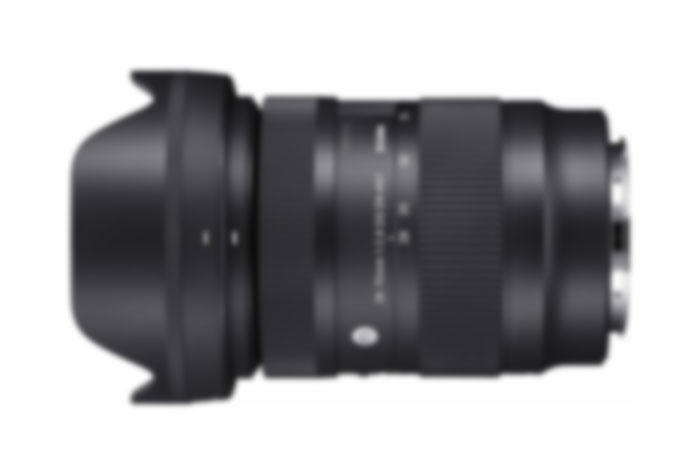
We have told you back in April 2022 that Sigma 16-28 mm is about to arrive, now according to the latest rumors surfaced over the web Sigma 16-28mm F2.8 for Sony Coming on June 1, we already have super affordable and budget-friendly Sigma 28-70mm F2.8 DG DN for Sony E mount.
16-28mm F2.8 DG DN | Contemporary
・ Lens configuration: 16 elements in 11 groups
・ Shortest shooting distance: 25cm
・ Maximum shooting magnification: 1: 5.6
・ Number of aperture blades: 9 (circular aperture)
・ Filter diameter: 72mm
・ Size : Φ77.2 x 100.6mm (E mount version is 102.6mm)
・ Weight: 450g
・ Mount: L mount ・ Sony E mount
Also, see –Sigma 70-200 F2.8 DG DN Sony Fullframe Mirrorless Lens Coming [Rumor]
Follow us on our social pages FACEBOOK | TWITTER | INSTAGRAM, If you have time –>see more Sony Alpha Rumor
source digicaminfo
|
KEEP THIS BLOG ALIVE - Support New Camera Buy Canon Lenses, Buy Music CD or Digital Camera at amazon it helps this site, and you do not pay anything extra, it is just a way to help support this site.

|
 Canon R7 is weather sealed camera with dual card slots, an updated 32-megapixel CMOS sensor, and enhanced video core specification the overall core spec looks very promising. In the video mode, we have a log profile open for cinematographers and the option to record a 10-bit internal video. Canon has given whatever the best core specs possible, at this price point
Canon R7 is weather sealed camera with dual card slots, an updated 32-megapixel CMOS sensor, and enhanced video core specification the overall core spec looks very promising. In the video mode, we have a log profile open for cinematographers and the option to record a 10-bit internal video. Canon has given whatever the best core specs possible, at this price point 3. We Know DSLRs are in Cannabilization mode
3. We Know DSLRs are in Cannabilization mode 6. Other Fullframe options
6. Other Fullframe options


















